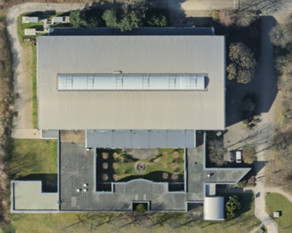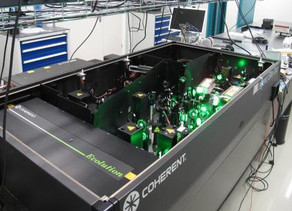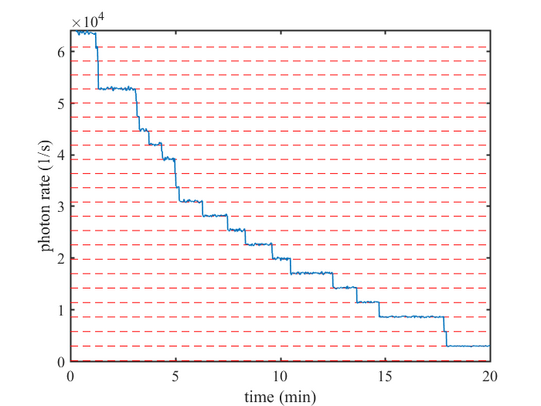Operating DELTA with a single electron
On 02/17/2023, the DELTA storage ring was operated with a single 1.5-GeV electron for the first time. The "beam" current is 0.42 picoampere in this case. Imagine that at a typical current of 100 milliampere, 240 billion electrons are circulating in the ring. The mean lifetime of a single electron cannot be determined in practice but with collective effects being absent, it is definitely higher than the typical beam lifetime, which is presently 25 hours.
Single electrons can be detected by counting synchrotron radiation photons. In the graph below, a beam of low current was produced first. At a normal beam current, it would take several weeks until only a single electron is left. Thus, an obstacle (a so-called scraper) was driven close to the beam in order to increase the loss rate. The loss of each electron shows up as a step in the photon counting rate. Before losing the last electron, the obstacle is retracted.
Single electrons in the storage rings BESSY and MLS in Berlin are employed by the PTB (the German metrology institute) for metrology-oriented research [1]. Single-electron measurements are also conducted at the experimental storage ring IOTA of Fermilab/USA [2]. Compared to traditional accelerator physics, new opportunities open up:
- The knowledge of beam properties, such as beam size or energy distribution, is deduced from the assumed dynamics of single particles under the influence of electromagnetic fields in a storage ring. These assumptions can be tested with single-electron operation and modified, if need arises.
- Synchrotron radiation is well-described as an electromagnetic wave in the frame of classical electrodynamics. The emission of photons by a single electron, on the other hand, reveals the quantum nature of synchrotron light. The statistical distribution of photons contains additional information which can be used for beam diagnostics purposes.
[1] R. Klein et al., Physical Review Special Topics – Accelerators and Beams 11, 110701 (2008).
[2] I. Lobach et al., Journal of Instrumentation 17, P02014 (2022).





